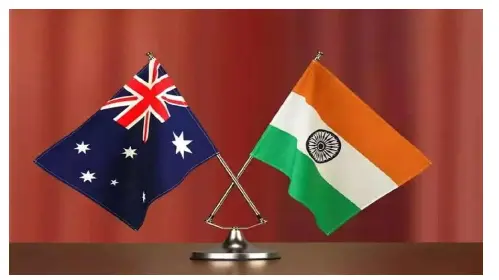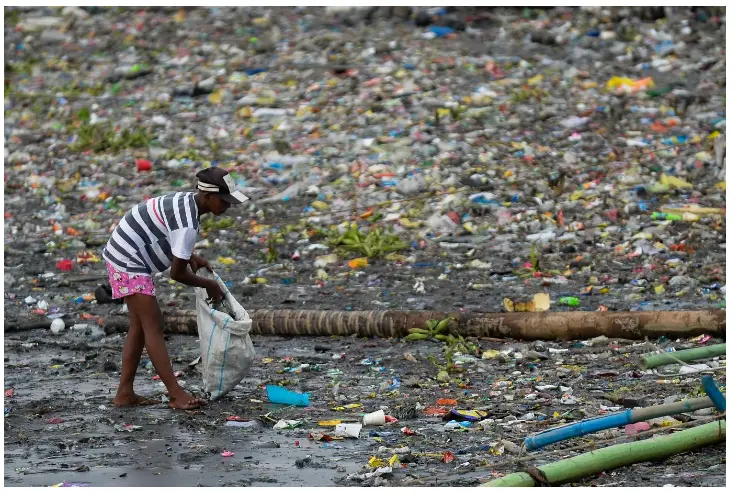Friday, 26th April 2024
The Resurfacing Debate Over 5% Quota for Muslims in Andhra Pradesh
In News: The resurgence of the debate surrounding the 5% reservation granted to Muslims in Andhra Pradesh in 2004 has brought back discussions on religion-based reservation.
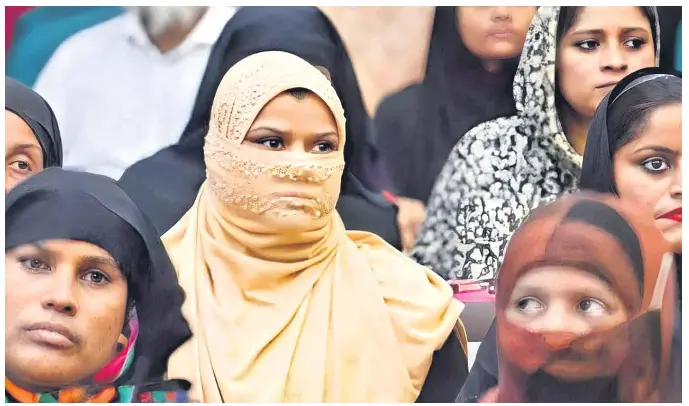
Background of Muslim Reservation in Andhra Pradesh
- Context:
- In Andhra Pradesh, approximately 9.5% of the population comprises Muslims. Some Muslim groups are already included in the state's Other Backward Classes (OBC) lists with quotas ranging from 7% to 10%.
- There is a push to include all Muslims in the OBC category, following the models of Karnataka and Kerala.
- Reservation in 2004:
- In June 2004, the government examined the socio-economic and educational status of Muslims for inclusion in the OBC list, leading to a 5% reservation under Articles 15(4) and 16(4).
- The Andhra Pradesh High Court struck down the quota for not being referred to the Backward Classes Commission and for not excluding the creamy layer, citing that the Muslim community cannot be considered a homogenous group.
- Reservation in 2005:
- The Backward Classes Commission recommended reservations for the entire Muslim Community, stating they are socially, educationally, and economically backward.
- An ordinance granting a 5% quota to Muslims was introduced, subsequently replaced with legislation.
- The High Court struck down the quota again, stating that the Commission did not rely on objective criteria to conclude that Muslims as a group were backward in Andhra Pradesh.
- Current Status:
- The Supreme Court was scheduled to hear the case in 2022, but it was postponed after the resolution of the Economically Weaker Section (EWS) quota issue.
- The EWS quota was cleared in November 2022, but the AP quota issue is pending.
Arguments Related to Religion-based Reservation in India
Arguments in Favor:
- Socio-Economic Backwardness: Muslims lag behind in socio-economic indicators, and reservations can bridge this gap.
- Constitutional Mandate: The Constitution allows affirmative action for socially and educationally backward classes, irrespective of religion.
- Ensuring Representation: Reservations ensure adequate representation of underrepresented religious groups.
Arguments Against:
- Secularism: Religion-based reservations contradict secularism, which advocates equal treatment of all religions.
- Undermining Unity: Such reservations could undermine national unity by fostering resentment among communities.
- Economic Criteria: Reservations should be based on economic criteria to ensure benefits reach the truly disadvantaged.
- Administrative Challenges: Implementing religion-based reservations poses administrative challenges.
Way Forward:
- Socio-Economic Criteria: Reservations could be based on socio-economic factors to ensure benefits reach the most disadvantaged individuals.
- Education Empowerment: Focus on improving educational infrastructure and skill development programs.
- Inclusive Policies: Implement policies addressing the needs of backward communities without resorting to religious-based reservations.
- Dialogue and Consensus: Engage stakeholders to address socio-economic challenges in line with constitutional values.
|
UPSC Previous Year Questions Prelims (2011) Q. With reference to the period of Indian freedom struggle, which of the following was/were recommended by the Nehru report?
Select the correct answer using the codes given below: (a) 1 only (b) 2 and 3 only (c) 1 and 3 only (d) 1, 2 and 3 Ans: (b) Mains (2018) Q. Whether National Commission for Scheduled Castes (NCSC) can enforce the implementation of constitutional reservation for the Scheduled Castes in the religious minority institutions? Examine. |
Source: IE
Is Government Redistribution of Privately Owned Property Permissible?
In News: Amidst the spotlight on wealth distribution in India, the Supreme Court initiated the interpretation process of Article 39(b) of the Indian Constitution with a nine-judge bench.

Understanding Article 39(b) of the Constitution
- Context and Placement: Article 39(b) is situated within Part IV of the Constitution, known as the Directive Principles of State Policy (DPSP).
- Directive Principal Content: It mandates the state to formulate policies aimed at ensuring that the ownership and control of material resources of the community are distributed in a manner that serves the common good.
- Nature of Directive Principles: DPSPs serve as guiding principles for legislation but are not directly enforceable in courts.
The Apex Court's Involvement in Interpreting Article 39(b)
- Historical Precedence: Since 1977, the Supreme Court has been involved in interpreting Article 39(b), notably in the case of State of Karnataka v Shri Ranganatha Reddy (1977).
- Dissenting View: The interpretation currently under review by a nine-judge bench originated from Justice V R Krishna Iyer's dissent in the Ranganatha Reddy case, suggesting that community resources encompass private properties.
- Recent Relevance: The matter has gained renewed attention in today's politically charged environment, following Rahul Gandhi's proposal for a financial and institutional survey aimed at redistributing India's wealth and resources.
Need for a Nine-Judge Bench Interpretation of Article 39(b)
- Clarification Requirement: The majority opinion in the Ranganatha Reddy case excluded private property from the definition of community resources. However, subsequent rulings have caused confusion, necessitating a comprehensive interpretation.
- Inconsistencies in Previous Decisions: Earlier judgments, such as the Sanjeev Coke case in 1983, relied on Justice Iyer's dissenting view, despite being a minority stance.
- Relevance of Advocates' Perspectives: Senior advocates argue against the inclusion of privately owned properties as community resources, considering it incompatible with democratic principles and individual rights enshrined in the Constitution.
Discussion on the Interpretation of Article 39(b)
- Clarification Scope: The focus of the current legal discussion is solely on the interpretation of Article 39(b), not on Article 31C, which offers legal protection to laws formulated in line with directive principles.
- Historical Precedents: Advocates reference past instances, such as land ceiling laws, to illustrate the state's authority to acquire land for public welfare while ensuring fair compensation to landowners.
- Concerns and Considerations: There are concerns about the potential impact on individual property rights if the government were to redistribute private property for public welfare, highlighting the need for a balanced approach.
Source: IE
National Clean Air Programme (NCAP)
In News: When the Indian government launched the National Clean Air Programme (NCAP) in 2019, the objective was to reduce the concentration of atmospheric Particulate Matter (PM) by 20-30% by 2024, compared to 2017 levels. However, this target was later revised to a more ambitious goal of 40% reduction by 2026.
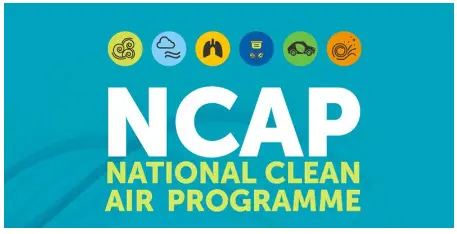
Challenges and Solutions for the National Clean Air Programme (NCAP)
Overview of NCAP
- The National Clean Air Programme (NCAP) was launched in January 2019 to address air pollution issues in India through city-specific action plans.
- It aims to implement stringent measures to prevent, control, and abate air pollution, enhance air quality monitoring, and increase public awareness.
- Funding Allocation:
- The Ministry of Environment, Forest, and Climate Change allocated ₹10,422.73 crore for NCAP.
- However, there have been challenges in utilizing these funds effectively.
Performance Evaluation of NCAP
- Air Information Centres and Pollution Forecasting:
- NCAP aimed to establish air information centres and pollution forecasting systems, but progress has been slow, with only a central portal functional as of December 2023.
- Committee Setup and Fund Utilization
- Committees proposed by NCAP face challenges in functionality and transparency, with only 40% of allocated funds utilized till November 2023.
- Monitoring Stations
- The target for manual monitoring stations under the National Air Quality Monitoring Programme has not been met, while progress has been better for Continuous Ambient Air Quality Monitoring Stations.
Challenges Faced by NCAP
- Inconsistent Implementation by States
- While cities have submitted Clean Air Action Plans, their implementation has been inconsistent, leading to delays.
- Lack of Standard Operating Procedures
- The absence of well-defined timelines and procedures hampers the implementation process.
- Other Challenges
- Bureaucratic hurdles and doubts regarding the effectiveness of proposed measures pose additional challenges.
Suggested Solutions
- Emissions Inventory (EI) and Source Apportionment (SA) Studies
- Conducting EI and SA studies is crucial for identifying pollution sources and shaping targeted control strategies.
- Importance of Air Quality (AQ) Modelling
- AQ modelling helps bridge gaps in understanding pollution dispersion, especially from distant sources.
- Swift Implementation
- Implementation agencies should streamline processes and reduce bureaucratic red tape to ensure timely execution of measures.
Conclusion
NCAP's success depends on a comprehensive approach involving scientific studies, strategic funding, and effective implementation. Overcoming challenges through coordinated efforts will pave the way for cleaner air in India.
Source: TH
India Advocates for Permanent Solution Regarding Public Stockholding
In News: At the 13th ministerial conference of the World Trade Organization (WTO), India presented a strong stance regarding the need for a permanent solution for public stockholding to ensure food security.
India's Key Points Highlighted in WTO Discussions
- India's Call for Broadening Focus of WHO:
- India urges the WTO to expand its focus beyond trade interests of agricultural exporters to address fundamental concerns like food security and sustaining livelihoods.
- Importance of Public Stockholding for Developing Countries:
- India emphasizes the necessity of public stockholding programs for developing countries to ensure food security, especially for vulnerable sections of society.
- Advocacy for a Level Playing Field:
- India stresses the need to create a level playing field in international agriculture trade, particularly for low-income or resource-poor farmers worldwide, to promote fairness and equity.
- Concerns About Disparities in Domestic Support:
- India highlights disparities in domestic support provided by countries to their farmers, with subsidies in developed nations reportedly up to 200 times higher than those in developing nations.
- India's Call for a Permanent Solution on Public Stockholding:
- India, along with other G-33 nations, urges the WTO to find a permanent solution to public stockholding, recognizing the development needs of member countries.
Understanding Public Stockholding
- Definition and Purpose:
- Public stockholding involves governments purchasing, storing, and distributing food grains to ensure food security for their populations.
- Advantages:
- Ensures food security during emergencies like droughts or market disruptions.
- Stabilizes prices by releasing stocks during price spikes.
- Supports farmers by offering income security and incentivizing production.
- Facilitates social welfare programs by providing subsidized food to vulnerable populations.
- Disadvantages:
- Imposes fiscal burden on governments due to storage and maintenance costs.
- May distort market prices and discourage private sector investment.
- Risks spoilage and wastage if storage is improper.
- Vulnerable to corruption and mismanagement.
- Can create friction in international trade if perceived as distorting fair competition.
Overview of WTO Agreement on Agriculture
- Purpose and Objectives:
- The WTO Agreement on Agriculture aims to promote fair trade in agricultural products by reducing trade barriers, regulating domestic support, and enhancing market access for agricultural exports.
- Key Provisions:
- Reduction of tariffs, quotas, and other restrictions on agricultural imports.
- Regulation of subsidies provided to domestic agricultural producers.
- Promotion of greater market access for agricultural exports.
- Limits on agricultural subsidies, with developing countries receiving certain protections.
- Peace Clause Provision:
- Under the Peace Clause, WTO members agreed to refrain from challenging breaches of prescribed subsidy ceilings by developing nations at the dispute settlement forum of the WTO.
- India's Experience with the Peace Clause:
- India has invoked the Peace Clause multiple times as its subsidy on rice exceeded the prescribed threshold, highlighting the importance of this provision for developing nations.
|
UPSC Previous Year Questions Prelims (2018) Q. India enacted the Geographical Indications of Goods (Registration and Protection) Act, 1999 in order to comply with the obligations to (a) ILO (b) IMF (c) UNCTAD (d) WTO Ans: (d) Prelims (2015) Q2. The terms ‘Agreement on Agriculture’, ‘Agreement on the Application of Sanitary and Phytosanitary Measures’ and ‘Peace Clause’ appear in the news frequently in the context of the affairs of the (a) Food and Agriculture Organization (b) United Nations Framework Conference on Climate Change (c) World Trade Organization (d) United Nations Environment Programme Ans: (c) Prelims (2016) Q3. In the context of which of the following do you sometimes find the terms ‘amber box, blue box and green box’ in the news? (a) WTO affairs (b) SAARC affairs (c) UNFCCC affairs (d) India-EU negotiations on FTA Ans: (a) Prelims (2017) Q4. Consider the following statements:
Which of the statements given above is/are correct? (a) 1 and 2 only (b) 1 and 3 only (c) 2 and 3 only (d) 1, 2 and 3 Ans: (a) Prelims (2020) Q5. With reference to Trade-Related Investment Measures (TRIMS), which of the following statements is/are correct? (2020)
Select the correct answer using the code given below: (a) 1 and 2 only (b) 2 only (c) 1 and 3 only (d) 1, 2 and 3 only Ans: (c) Mains (2014) Q1. WTO is an important international institution where decisions taken affect countries in a profound manner. What is the mandate of WTO and how binding are their decisions? Critically analyse India’s stand on the latest round of talks on Food security. Mains (2016) Q2. “The broader aims and objectives of WTO are to manage and promote international trade in the era of globalization. But the Doha round of negotiations seem doomed due to differences between the developed and the developing countries.” Discuss in the Indian perspective. Mains (2018) Q3. What are the key areas of reform if the WTO has to survive in the present context of ‘Trade War’, especially keeping in mind the interest of India? |
Source: LM
Kalesar Wildlife Sanctuary
In News: Recently, a tiger was captured on a camera trap within Kalesar Wildlife Sanctuary in Haryana's Yamunanagar district.
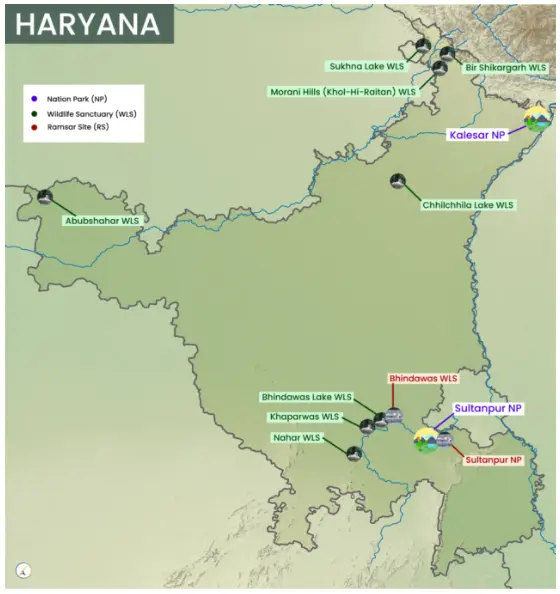
Exploring Kalesar Wildlife Sanctuary
- Location:
- Situated in the eastern part of Yamunanagar district in Haryana, Kalesar Wildlife Sanctuary spans an area of 11,000 acres.
- Nestled in the Shivalik foothills of the Himalayas, it is bordered to the east by the Yamuna River.
- The sanctuary derives its name from the Kalesar Forest, which forms an integral part of the reserve.
- Topography:
- The terrain varies from plains to hills, reaching elevations of up to 700 meters.
- Characterized by narrow valleys known as 'khols' nestled amidst the hills.
- These valleys are home to seasonal rivulets, locally referred to as 'soats,' which typically remain dry for most of the year.
- Noteworthy features within the sanctuary include the historic Kalesar Fort, believed to have been constructed during the reign of the Mughal emperor Aurangzeb, and colonial-era Dak bungalows, serving as administrative architectural landmarks.
- Flora:
- The sanctuary predominantly features a diverse range of tree species, including sal, khair, shisam, tun, sain, and amla.
- Fauna:
- Kalesar Wildlife Sanctuary harbors a rich biodiversity, hosting numerous animal species such as leopards, sambar deer, barking deer, hyenas, jackals, Indian porcupines, Indian pangolins, and langurs.
- Additionally, the sanctuary serves as a habitat for various bird species, including the red junglefowl, grey partridge, Indian peafowl, and white-throated kingfisher.
Source: TW
Global Report on Food Crises (GRFC) 2024
In News: According to the recently released 2024 Global Report on Food Crises (GRFC), nearly 282 million individuals experienced high levels of acute food insecurity across 59 countries in 2023.
Exploring the Global Report on Food Crises (GRFC) 2024
- Introduction:
- The GRFC is an annual publication produced by the Food Security Information Network (FSIN) and launched by the Global Network Against Food Crises.
- This initiative involves various stakeholders, including United Nations agencies, the European Union, the United States Agency for International Development, and non-governmental organizations, working collectively to address food crises.
- Highlights of GRFC 2024:
- The report analyzed data from 2023, covering a population of 1.3 billion across 59 countries.
- 2023 marked the fifth consecutive year of increases in the number of people experiencing acute food insecurity, defined as situations where populations face food deprivation endangering lives or livelihoods, irrespective of causes or duration.
- Nearly 282 million individuals confronted high levels of acute food insecurity across the 59 countries in 2023.
- Conflicts, extreme weather events, and economic shocks emerged as the primary drivers exacerbating food crises globally.
- Conflict or insecurity emerged as the predominant driver in 20 countries, directly impacting 135 million people, with notable crises in Palestine (Gaza Strip) and Sudan.
- The Gaza Strip experienced its most severe food crisis in the past eight years according to GRFC reporting, while Sudan grappled with one of the world's worst food crises, necessitating emergency food aid for nearly a third of its population.
- Extreme weather events were the primary driver in 18 countries, affecting over 72 million people with acute food insecurity.
- The ten countries with the most significant food crises in 2023 included the Democratic Republic of the Congo, Nigeria, Sudan, Afghanistan, Ethiopia, Yemen, the Syrian Arab Republic, Bangladesh, Pakistan, and Myanmar.
- Encouragingly, the situation improved in 17 countries in 2023, including the Democratic Republic of Congo and Ukraine.
Source: DTE
The Intergovernmental Negotiating Committee (INC-4)
In News: The fourth session of the Intergovernmental Negotiating Committee (INC-4) aimed at developing an international legally binding instrument on plastic pollution, encompassing marine environments, commenced in Canada's capital, Ottawa.
Exploring the Intergovernmental Negotiating Committee on Plastic Pollution:
- Background:
- In March 2022, during the fifth session of the UN Environment Assembly, a historic resolution was adopted to develop an international legally binding instrument (ILBI) addressing plastic pollution, particularly in marine environments.
- The resolution tasked the Executive Director of the UN Environment Programme (UNEP) with convening an Intergovernmental Negotiating Committee (INC) to develop the instrument, focusing on a comprehensive approach covering the entire life cycle of plastic, from production to disposal.
- Objectives:
- The global plastics treaty aims to establish a framework of standards encompassing accountability, responsibilities, financing, material/chemical standards, and import/export restrictions, along with setting targets.
- Countries will be responsible for implementing globally aligned policies to meet these targets derived from the global framework.
- INC Process:
- The INC was established to develop the specific content of the new ILBI by the end of 2024.
- It commenced its work in the latter half of 2022, aiming to conclude negotiations by late 2024.
- INC sessions include INC-1 in Punta del Este, Uruguay (November 28 - December 2, 2022), INC-2 in Paris, France (May 29 - June 2, 2023), and INC-3 in Nairobi, Kenya (November 13 - 19, 2023).
- INC-5, scheduled for November 25 - December 1, 2024, in Busan, Republic of Korea, is slated to mark the conclusion of the INC process.
- Following INC-5, a Diplomatic Conference will convene, where Heads of State will sign the agreement.
Source: UN
Spices Board India
In News: Following the ban on certain spices from Indian brands in Singapore and Hong Kong due to quality concerns, the Spices Board announced its intention to initiate mandatory testing of consignments destined for these two countries.
Exploring the Spices Board India
- Establishment:
- The Spices Board India is a statutory organization established on February 26, 1987, under the Spices Board Act of 1986.
- It was formed through the merger of the former Cardamom Board and Spices Export Promotion Council.
- Objectives and Functions:
- Serving as an international liaison between Indian exporters and foreign importers, the Board engages in various activities spanning the entire spectrum of the spices sector.
- Key functions include:
- Facilitating the overall development of cardamom (both small and large) by enhancing production, productivity, and quality.
- Implementing post-harvest improvement programs to enhance the quality of the 52 scheduled spices earmarked for export.
- Encompassing development and post-harvest quality improvement initiatives under the category of 'Export Oriented Production'.
- Promoting organic production, processing, and certification of spices.
- Fostering the development of spices in the North East region of India.
- Providing quality evaluation services to ensure standards compliance.
- Nodal Ministry:
- The Spices Board India operates under the aegis of the Ministry of Commerce & Industry, Government of India.
Source: IE
Tiger Conservation Coalition
In News: Recently, during the Sustainable Finance for Tiger Landscapes Conference, both Bhutan and the Tiger Conservation Coalition pledged to catalyze US$1 billion for tiger conservation efforts.
Exploring the Tiger Conservation Coalition
- Purpose and Members
- The Tiger Conservation Coalition comprises a consortium of non-governmental organizations (NGOs) dedicated to tiger conservation efforts.
- With a collective vision for the long-term preservation of viable and ecologically functional populations of wild tigers in secure habitats, the coalition aims to ensure representation and connectivity across the indigenous range of tigers.
- Expertise and Collaboration
- Bringing together leading tiger biologists and experts in wildlife crime, human-wildlife coexistence, policy, finance, development, and communications, the coalition fosters unprecedented alignment towards achieving tiger conservation at scale.
- Key member NGOs include the Environmental Investigation Agency (EIA), Fauna & Flora International, the International Union for Conservation of Nature and Natural Resources (IUCN), Panthera, TRAFFIC, the United Nations Development Programme (UNDP), the Wildlife Conservation Society (WCS), and the World Wide Fund for Nature (WWF).
- Initiatives
- The coalition members collaborated on the development of Tiger Conservation Landscapes 3.0, an integrated habitat modelling system aimed at assessing and monitoring changes in tiger habitats at various scales, from range-wide to national, biome, and landscape levels, in near real-time.
- This innovative approach serves as a model for objective, range-wide habitat monitoring, aligning with the goals outlined in the 30x30 agenda, the Sustainable Development Goals, and the Kunming-Montreal Global Biodiversity Framework.
Source: PIB
Tensions grows in West Asia, a heavily militiarised region
In News: According to the report from the Stockholm International Peace Research Institute, West Asia stands out as one of the most heavily militarized regions worldwide, with four of the top 10 arms importers situated in this area.
Historical Background of West Asian Conflict
- Ottoman Empire’s Influence: Western Asia was predominantly under the control of the Ottoman Empire from the 14th century AD until the early 20th century, managing a diverse population through an efficient administrative system.
- Post-World War I Developments: Following World War I and the collapse of the Ottoman Empire, the victorious Allied powers, primarily Britain and France, divided the region, disregarding local sentiments and promises made during the war.
- Sykes-Picot Agreement: The 1916 Sykes-Picot Agreement divided Ottoman territories into British and French spheres of influence, disregarding local aspirations and contributing to regional tensions.
- Balfour Declaration: Issued by the British government in 1917, the Balfour Declaration expressed support for a Jewish homeland in Palestine, igniting long-lasting conflicts in the region.
- Creation of Israel: In 1948, Israel declared independence, leading to a war with neighboring Arab states and significant territorial changes.
- 1979 Revolution: The establishment of a religious state in Iran after the Islamic Revolution shifted Iran's stance towards Israel, labeling it as an occupier of Palestinian land.
- Shadow War after 1979: Tensions between Israel and Iran escalated, leading to indirect confrontations and proxy conflicts, including cyberattacks and support for militant groups.
Key Players and Their Objectives
- Israel: Aims to ensure its security, dismantle threats, and neutralize militant groups like Hamas and Hezbollah.
- Hamas: Seeks to challenge Israeli policies and actions in Gaza and the West Bank, advocating for Palestinian rights.
- Iran: Supports anti-Israel groups and aims to extend its influence in the region while opposing U.S. and Israeli interests.
- Hezbollah and Other Militias: Backed by Iran, these groups engage in conflicts against Israel and support Palestinian causes.
- United States: Supports Israel and seeks to maintain regional stability, protect its interests, and uphold the U.S.-led order.
- Other Regional Actors: Countries like Pakistan have strategic interests influenced by religious, political, and regional dynamics.
Geopolitical Impact of Conflicts
- Humanitarian Crisis: Continued conflicts risk civilian casualties and worsen humanitarian conditions, especially in Gaza.
- Regional Instability: Prolonged conflicts destabilize West Asia, affecting neighboring countries and prompting further violence.
- Global Economic Impact: Disruptions in shipping routes and oil supply chains have global economic repercussions.
- Spread of Extremism: Conflict fuels radicalization and extremism, exacerbating regional instability.
- International Relations: Diplomatic tensions strain relations among global powers and hinder efforts for peace.
Proposed Approaches to Address the Conflict
- Negotiations and Two-State Solution: Advocacy for a negotiated two-state solution to establish peace between Israel and Palestine.
- Ceasefire and Humanitarian Assistance: Immediate ceasefires and aid provision to alleviate suffering and create a conducive environment for diplomacy.
- International Mediation: Involvement of neutral international actors to facilitate peace talks and negotiations.
- Addressing Core Issues: Resolution of root causes such as land disputes and refugee rights to foster long-term stability.
- People-to-People Initiatives: Encouraging dialogue and cooperation between Israelis and Palestinians at grassroots levels.
- Human Rights and International Law: Ensuring respect for humanitarian law and holding violators accountable for their actions.
- Regional Cooperation: Involving neighboring countries and regional actors in peace efforts for a more stable environment.
- Economic Development: Supporting economic growth to improve living conditions and create opportunities for both sides.
- Security Measures: Implementing measures to ensure security for both Israelis and Palestinians, possibly involving international peacekeeping forces.
- Educational Initiatives: Promoting education and awareness to foster understanding and tolerance between the two sides.
Conclusion
the conflicts in West Asia have deep historical roots and involve multiple stakeholders with divergent objectives. Addressing these conflicts requires a comprehensive approach involving diplomacy, humanitarian aid, and efforts to resolve underlying issues.
|
UPSC Previous Year Questions Prelims (2015) Q. Which one of the following countries of South-West Asia does not open out to the Mediterranean Sea? (a) Syria Ans: B Prelims (2018) Q. The term “two-state solution” is sometimes mentioned in the news in the context of the affairs of (a) China Ans: B Mains (2018) Q. “India’s relations with Israel have, of late, acquired a depth and diversity, which cannot be rolled back.” Discuss. |
Source: TH
Share the article
Get Latest Updates on Offers, Event dates, and free Mentorship sessions.

Get in touch with our Expert Academic Counsellors 👋
FAQs
UPSC Daily Current Affairs focuses on learning current events on a daily basis. An aspirant needs to study regular and updated information about current events, news, and relevant topics that are important for UPSC aspirants. It covers national and international affairs, government policies, socio-economic issues, science and technology advancements, and more.
UPSC Daily Current Affairs provides aspirants with a concise and comprehensive overview of the latest happenings and developments across various fields. It helps aspirants stay updated with current affairs and provides them with valuable insights and analysis, which are essential for answering questions in the UPSC examinations. It enhances their knowledge, analytical skills, and ability to connect current affairs with the UPSC syllabus.
UPSC Daily Current Affairs covers a wide range of topics, including politics, economics, science and technology, environment, social issues, governance, international relations, and more. It offers news summaries, in-depth analyses, editorials, opinion pieces, and relevant study materials. It also provides practice questions and quizzes to help aspirants test their understanding of current affairs.
Edukemy's UPSC Daily Current Affairs can be accessed through:
- UPSC Daily Current Affairs can be accessed through Current Affairs tab at the top of the Main Page of Edukemy.
- Edukemy Mobile app: The Daily Current Affairs can also be access through Edukemy Mobile App.
- Social media: Follow Edukemy’s official social media accounts or pages that provide UPSC Daily Current Affairs updates, including Facebook, Twitter, or Telegram channels.



